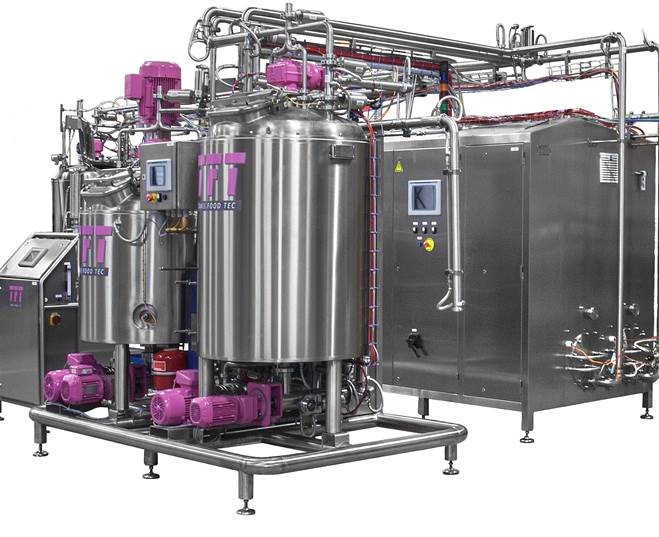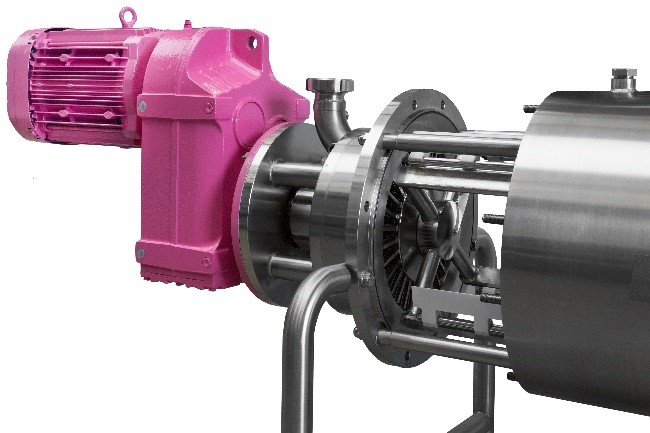Automation with cream - Sandwich Biscuits
Sandwich biscuits are the leading baking and confectionery product being produced at the highest numbers and volumes globally. Tanis Food Tec (“TFT”) developed a fully automated cream preparation system for sandwich biscuits.
There are many product configurations and fillings: deposited soft biscuits, wire cut, rotary, and laminated biscuits. In the past 25 years TFT equipped many sandwich lines for the fillings (cream, caramel, dulce de leche, marshmallow, fruit, peanut butter and jelly). The cream filled sandwich biscuit continues to be very popular, the Oreo Sandwich has been iconic since 1912. Aerated and non-aerated cream fillings are most often the starting point of a complete sandwich biscuit portfolio.

THERE ARE TWO WAYS OF APPLYING THE CREAM FILLING TO A BISCUIT BASE:
1. The Capper Principle: biscuits arrive at the capper from the oven, on a cooling conveyor in the same patterns as being baked. After flipping of each 2nd row the filling is deposited by a manifold. After depositing, the 2nd biscuit is put on top of the deposited cream by a venturi nozzle bar. The capper allows a wide range of biscuit shapes in combination with a variety of fillings such as cream, marshmallow, jelly, caramel, marmalades, peanut butter or a combination of fillings. Typical advantages for this type of application include flexibility, easy change over, and depositing soft and sticky fillings.
2. The Stencil Principle: After being baked, cooled and staggered the lane numbers are reduced and fed to the applicator at a high speed. The filling is pumped into a rotating stencil shaft that applies it onto the biscuit. A system that is once a labor intensive and an inconsistent process: cream was produced in a ‘cold’ method, plasticized fat was mixed with sugar, color, flavor and emulsifier. The mixing bowls were brought to the line and the solid cream was scooped into the cream pots of the sandwiching machine. TFT has developed an automated system to overcome the labor intensive old system, that feeds the cream in line to the stencil shaft based upon the TFT RotoTemp scraped surface heat exchanger. The ingredients are being mixed using a warm fat (oil) at a temperature above the melting point of the fat. This method keeps the cream pumpable and the product can be transferred from the mixing plant to the line through jacketed piping.
The TFT-RotoTemp cools down the cream and the partly crystalized filling is pressure fed to the stencil shaft at the right density, temperature and viscosity. A substantial reduction of labor and full control: the system can maintain the product at the ideal point of the SFC (solid fat content) curve of the fats! This innovation has been received very well by the industry. Many lines are being updated and modified to work with this system and new lines are now executed with this automated cream system.
CLEANING IN PLACE (CIP)
High sanitary requirements have lead TFT to make these systems fully CIP-able. The capping and sandwiching machines are fully designed for CIP with automatic dosing of detergents, sanitizers, and drying as optional features. TFT manufactures state-of-the-art equipment which is designed for profitability, efficiency, and reliability. This technology was developed in close cooperation with suppliers of both cappers and sandwiching machines, ingredient suppliers and manufacturers of sandwich biscuits.

